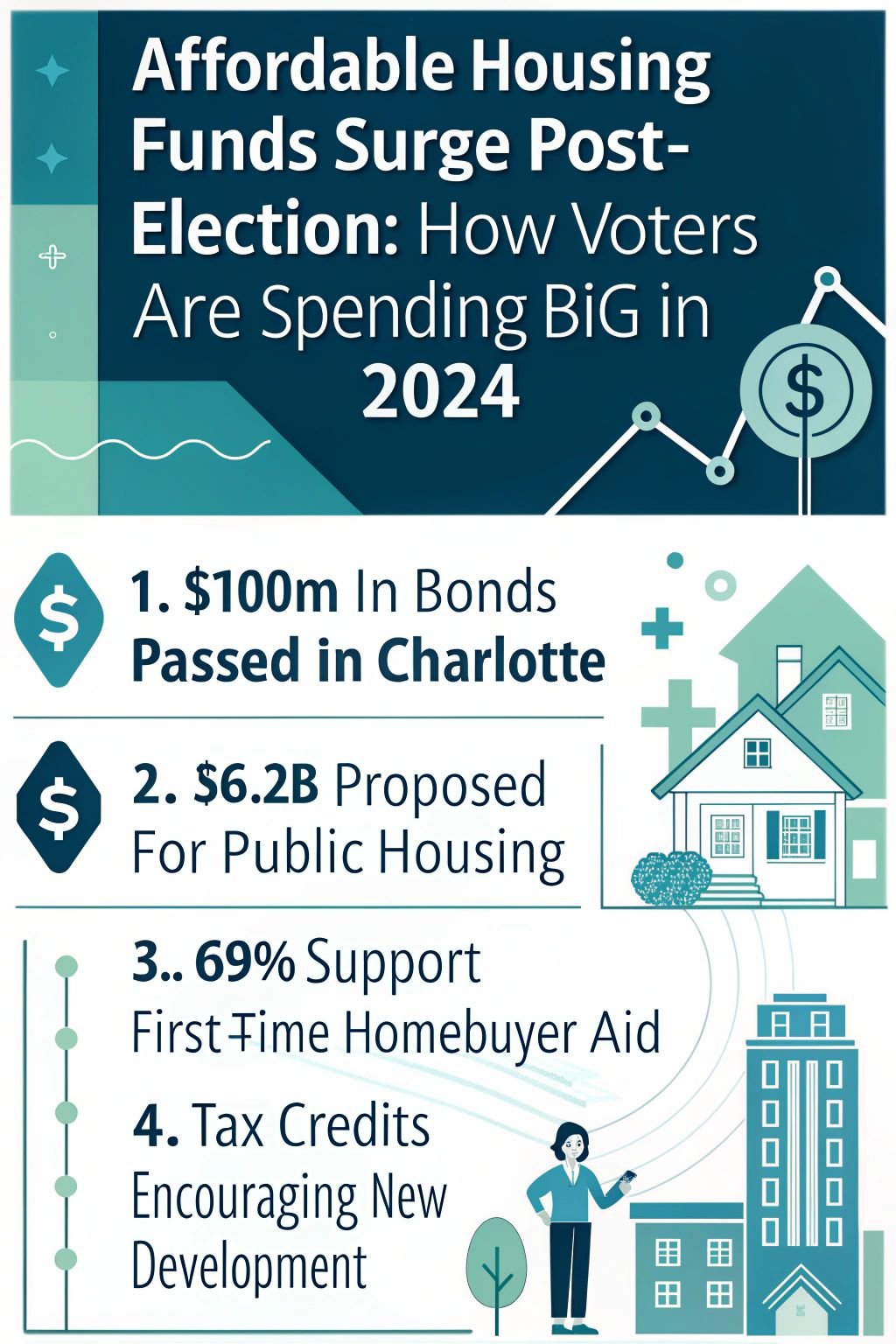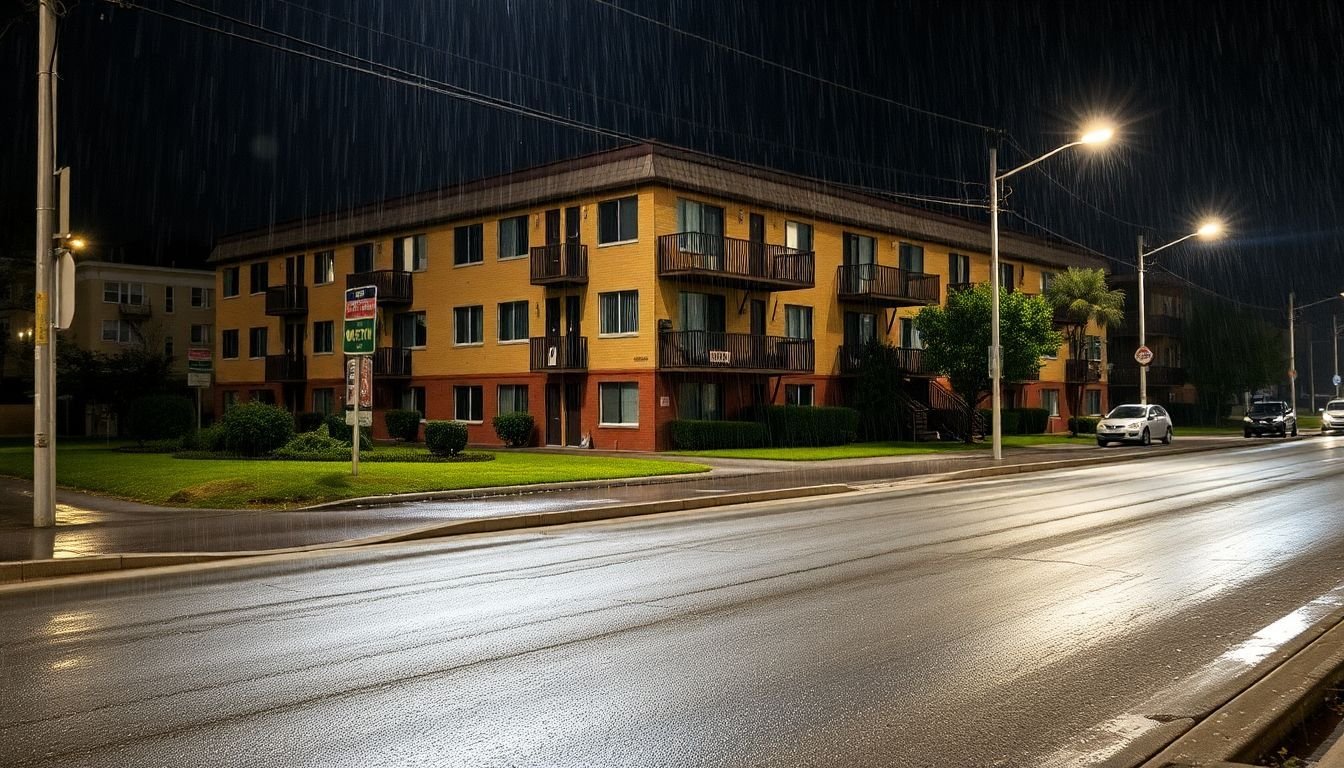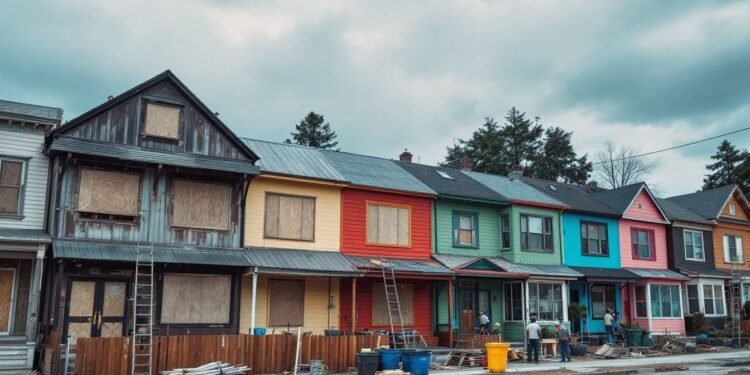Finding a place to live is tough. Rents are high. Buying a house feels impossible. Post-election, voters are changing this. Charlotte voters approved $100 million for affordable housing. 3 This article shows how voters are making housing more affordable. 2 Learn how you can find a home you can afford. 1
Key Takeaways
- Voters are approving significant funding for affordable housing in 2024.Examples include Charlotte’s $100 million bond and Rhode Island’s $120 million bond. San Francisco voters approved Prop G, providing $8.25 million annually for rental subsidies. Baltimore added $20 million for affordable housing.
- Increased funding supports programs like Section 8 vouchers and the HOME Investment Partnerships Program. The NLIHC is pushing for increased federal funding for housing and homelessness programs, including $6.2 billion for public housing and $4.7 billion for homeless assistance grants.
- Tax incentives for developers, like tax credits and tax-exempt bonds, encourage the construction of affordable housing. Los Angeles’ Measure A increased sales tax to fund housing and services.
- Government agencies like HUD and nonprofits like Habitat for Humanity are working together to expand homeownership opportunities.Local housing authorities are collaborating with developers to streamline the development of affordable housing projects.
- Public support for down payment assistance and home repair funding is high.Sixty-nine percent of voters support up to $25,000 in down payment assistance for first-time homebuyers. Eighty percent support funding for home repairs.

Impact of Post-Election Funding on Affordable Housing

Fresh off the 2024 local elections, your dream of owning a home might feel a little closer. This year, voters poured funds into programs like Section 8 vouchers and the HOME Investment Partnerships Program, boosting access to affordable housing options.
Want to know how these initiatives could impact your local market? Read on.
Increased investments in low-income housing programs
You benefit from increased government funding for affordable housing. Groups like the National Low Income Housing Coalition (NLIHC) push for more money. They want Congress to increase the FY25 budget for housing and homelessness programs.
Only one in four families who qualify for help get it. 1 The NLIHC wants more Housing Choice Vouchers. They want 20,000 more families to get rental assistance. This means more options for you as a home buyer.
More funding also means developers build more affordable homes.
This push for increased funding includes $6.2 billion for public housing operations. 1 Another $4.7 billion could go to grants for homeless assistance. Over 75 organizations support the Campaign for Housing and Community Development Funding.
They want to see real change in housing affordability. These investments create opportunities for homeownership. They aim to address the housing crisis. Tax incentives for developers further encourage building.
This means more housing solutions and more choices for you. 2
A decent home and suitable living environment are essential to the wellbeing of individuals and families. – Eleanor Roosevelt
Expansion of rental assistance initiatives
Beyond direct investments in building more low-income housing, your tax dollars are also boosting rental assistance programs. This means more subsidies. These subsidies help very low-income households afford rent.
Think of the success of San Francisco’s Prop G. Voters approved Prop G in 2024. 3 It provides $8.25 million each year for rental subsidies. Housing authorities and nonprofits play a key role here.
They distribute these funds. They ensure programs reach those most in need. This public support makes a big difference. It helps families stay in their homes. It eases the burden of rising housing costs.
These initiatives are changing lives. They offer a safety net for many. They show the power of big spending in the polls. These millions invested demonstrate a commitment to affordable housing solutions. 2
Key Areas of Spending by Voters in 2024
Did you know voters are using their power to shape housing in 2024? Explore how bond measures and property tax allocations are changing the landscape of affordable housing options.
Development of urban housing projects
Charlotte voters approved a $100 million bond for affordable housing. Rents there have climbed 27% since 2019. 4 This bond directly impacts urban development. It funds new housing construction.
It also supports existing programs. These programs assist home buyers in urban areas. Baltimore also passed a $20 million bond. Rental costs increased 8.5% there last year. 4 These urban housing projects aim to ease the burden of rising rents.
They offer more housing options for residents.
Rhode Island voters dedicated $120 million in bonds for affordable housing. The increase in housing prices after the pandemic spurred this action. San Francisco voters passed Prop G.
This measure provides $8.25 million yearly for rental subsidies. These subsidies help people stay in their homes. Denver voters rejected a similar measure. Ballot Issue 2R would have raised $100 million annually.
These examples show varying voter approaches to affordable housing. Urban development and homeownership programs are key focuses. Tax incentives for developers also play a role. Nonprofits and government agencies often collaborate on these projects. 5Tax incentives for affordable housing developers
You benefit from lower housing costs. Developers get tax breaks. These incentives spur construction. Los Angeles’ Measure A shows voter support for affordable housing. This sales tax increase funds housing and services.
It rose from 0.25% to 0.5%. Institutional investors and nonprofits often team up on projects. They combine financial power with community knowledge. This creates more affordable homes.
These tax incentives can make homeownership a reality for you. They help developers build in urban areas. They also encourage investment in low-income housing programs.
Consider tax credits. These credits reduce a developer’s tax bill. They can then offer lower rents. Another incentive is tax-exempt bonds. Governments issue these bonds. They raise money for affordable housing development.
This lowers construction costs. Lower costs mean lower prices for home buyers. These programs help address the housing crisis. They make homeownership possible for more people. > “A home is a place where you can be yourself.
Role of Government and Nonprofits in Housing Solutions
Want to buy a house but worried about the price? Government agencies like HUD and nonprofits like Habitat for Humanity are teaming up to make homeownership a reality for more people.
Curious to learn more about these programs and how they can help you? Check out resources like the National Housing Conference and the Council of Large Public Housing Authorities for the inside scoop.
Collaboration with housing authorities
Imagine securing affordable housing through teamwork. Local housing authorities partner with developers like Pretium. This collaboration helps find suitable properties. These properties meet specific criteria for affordable housing projects. 7 Think of it as a pre-approved list. This pre-approval process saves you money on assessments and renovations. This process also speeds up the building of new affordable homes. Some local governments offer tax incentives.
These Payment In Lieu Of Taxes (PILOTs) reduce costs for developers. These savings can then translate to lower rents for you. These programs increase access to affordable housing in your community.
They make homeownership a real possibility. They support the post-election surge in affordable housing funds. These initiatives are part of a bigger push for more affordable housing options.
Support for homeownership programs
Beyond housing authorities, government and nonprofits champion homeownership. They understand your dream. Two-thirds of people want to own a home. Saving for a down payment is hard.
Seventy percent of voters agree. They struggle with this hurdle. Programs offer solutions. Think down payment assistance. Sixty-nine percent of voters back up to $25,000 for first-time buyers.
This funding tackles the affordability challenge. These programs bolster the housing market. They boost homeownership rates. They stabilize communities. Rundown homes need repairs.
Eighty percent of voters support funding for this. These repairs address safety concerns. They increase property values. These initiatives make homeownership possible. They create a path for you.
They build a stronger future. This investment in affordable housing benefits everyone.
Conclusion
You now understand how election outcomes directly affect your housing options. These voter-approved initiatives boost programs like Section 8 vouchers and LIHTC. Think about how tax credits for developers can bring down your future mortgage.
Government agencies and charities work together on solutions like first-time homebuyer grants. Imagine the possibilities these combined efforts create for your dream home. Explore local housing resources for more information.
Your informed vote shapes the future of affordable housing.
FAQs
1. Why are affordable housing funds increasing after the 2024 election?
Voters in swing states like Nevada prioritized affordable housing.They showed this by supporting measures in the 2024 presidential elections.This happened across party lines, with both Democrats and Republicans recognizing the need.These funds aim to address the housing crisis.The crisis is impacting many Americans, especially communities of color.
2. How did mail-in ballots influence the outcome of affordable housing initiatives?
The increased use of mail-in ballots, facilitated by the U.S. Postal Service (USPS) under Postmaster General Louis DeJoy, likely played a role.More people voted, including those who struggle with transportation.This potentially boosted support for affordable housing measures.Some politicians, like Kari Lake and Matt Gaetz, questioned the integrity of mail-in ballots.However, they remain a key part of American democracy.
3.What role did environmental concerns play in the push for affordable housing?
The connection between affordable housing and environmental health became a key issue.Voters recognized that climate change, flooding, and plastic pollution disproportionately affect low-income communities.Initiatives like the Washington Climate Commitment Act and the Inflation Reduction Act addressed these concerns.They promote nature-based solutions, renewable energy generation (like wind energy), and waste management (like recycling).
4.How does the Farm Bill connect to the affordable housing conversation?
The Farm Bill discussions included provisions for sustainable agriculture, wetlands conservation, and clean water (via the Clean Water Act).These provisions aim to protect wildlife habitat and ensure food security.This ties into affordable housing by promoting healthy, affordable food options in underserved communities.
5. Did the political climate surrounding the attack on the Capitol and the voting rights act influence the vote on affordable housing?
The tense political climate, including debates about the attack on the Capitol, voting rights (the Voting Rights Act), and redistricting (gerrymandering), likely influenced voter turnout.This, in turn, impacted the passage of affordable housing initiatives.The state legislative chambers, even unicameral ones like Nebraska’s, saw intense debates.Figures like Presidents Trump, Pete Hegseth, and Senators Susan Collins, Tammy Baldwin, and Joni Ernst weighed in on these issues.
6. How are affordable housing initiatives addressing energy transition and water testing?
Affordable housing projects are increasingly incorporating clean energy solutions. This includes offshore wind energy along coastlines, overseen by FERC.This reduces energy costs for residents.Additionally, initiatives are tackling issues like PFAS contamination in water through increased water testing.This ensures safe drinking water in affordable housing communities.
References
- ^ https://nlihc.org/federal-budget-and-spending
- ^ https://www.enterprisecommunity.org/blog/2024-election-and-affordable-housing
- ^ https://nlihc.org/resource/voters-approve-housing-and-homelessness-ballot-measures-across-country-election-day (2024-11-12)
- ^ https://www.redfin.com/news/2024-local-election-results-show-voters-are-willing-to-spend-big-on-affordable-housing/
- ^ https://www.multifamilyexecutive.com/news/housing-on-the-ballot-in-2024-elections_o
- ^ https://finance.yahoo.com/news/2024-election-housing-measures-passed-143014339.html (2024-11-23)
- ^ https://housingmatters.urban.org/articles/partnerships-between-institutional-investors-and-nonprofits-could-boost-affordable-housing (2024-11-20)
- ^ https://www.dataforprogress.org/blog/2024/9/19/voters-overwhelmingly-support-a-range-of-solutions-to-address-the-housing-crisis (2024-09-19)
- ^ https://www.tn.gov/content/dam/tn/tacir/2024publications/2024_HousingAffordability.pdf (2024-05-29)





















